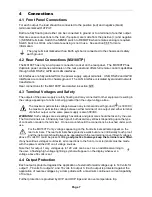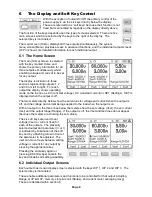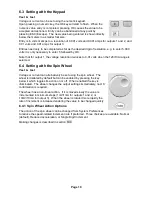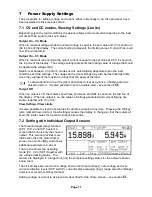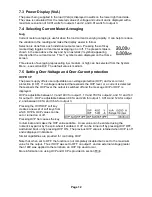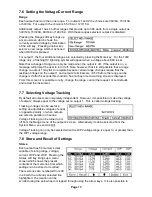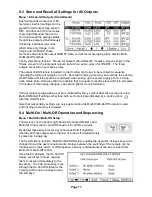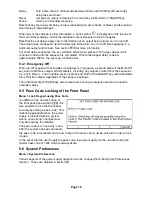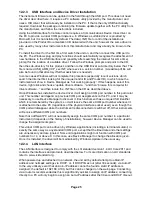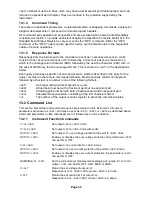
Page 21
11
Notes on Operation
11.1 Remote Sense
Each output has a very low output impedance, but this is inevitably increased by the resistance
of the connecting leads and the contact resistance between terminals and leads. At high
currents this can result in significant differences between the indicated source voltage and the
actual load voltage (two 20 milliohm connecting leads will drop 0.2V at 5 Amps, for example).
This problem can be minimised by using short, thick, connecting leads, but where necessary, it
can be completely overcome by using the remote sense capability.
This requires the sense terminals to be connected to the output at the load instead of at the
source by inserting wires into the SENSE terminals and connecting them directly to the load.
The switch should then be set to REMOTE instead of LOCAL.
To avoid instability and transient response problems, care must be taken to ensure good
coupling between each output and sense lead; this can best be done by twisting the leads
together. An electrolytic capacitor directly across the load connection point may also be
beneficial.
The voltage drop in each output lead should not exceed 0.5 Volts. Higher voltage drops could
result in small metering errors or an inability to supply full power to the load when approaching
maximum voltage and current.
11.2 Instantaneous Current Output
The current setting control can be set to limit the continuous output current to levels down to the
milliamps. However, in common with all precision bench power supplies, a capacitor is
connected across the output to maintain stability and good transient response.
This capacitor charges to the output voltage and short-circuiting of the output will produce a
current pulse as the capacitor discharges which is independent of the current limit setting.
11.3 Output On/Off and Response Speed
The output On/Off control of the power supply is entirely electronic. The Off condition is
achieved by setting the voltage to zero and the current level to low. There is no physical
disconnection of the outputs.
When an output is turned on or off there is a delay between the key being pressed and the
output voltage or current going to zero (off) or rising to the set voltage or current (on).
The delay is a function of the loop response time of the power supply and of the stability
capacitor which is placed across the output terminals. This capacitance has to be charged or
discharged before the output can reach the set voltage or return to zero respectively.
Because bench power supplies are used primarily in CV (constant voltage) mode, the following
explanation applies to CV mode. The situation for CC mode is different.
When switching on, the output will normally rise to the set value within a fixed length of time,
typically a few milliseconds (see section 17 – Specifications). However this time could be
increased if the current setting is very low or is very close to the current required by the load. A
large external capacitance at the load could also slow down the response.
When switching off with no load, the output will normally fall back to zero within a fixed length of
time (see section 17 – Specifications). If a load is connected the response may be quicker
because of the additional discharge provided by the load. However, if the load includes a large
capacitance the response may be slower.
Содержание MX180T
Страница 1: ...MX180T MX180TP Triple Output Multi Range DC Power Supply INSTRUCTION MANUAL ...
Страница 44: ......

